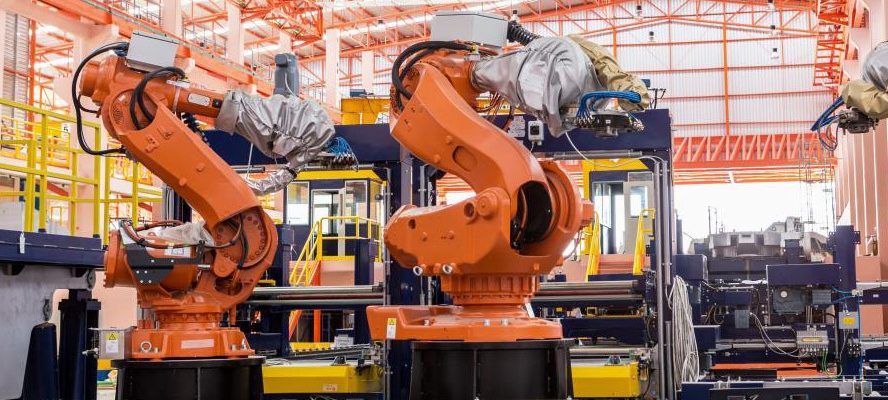Robot welding centers on using sophisticated mechanized tools that are programmed to execute a welding process. The robots take care of the weld and handling part through an automated process. Some are under the impression that processes such as gas metal arc welding is robot welding. These processes are not equivalent to robot welding because they require the assistance of a human operator. The human operator prepares the materials for gas metal arc welding and other similar welding processes. Robot welding is used for resistance spot welding projects and arc welding projects.
The Introduction of Robots
Robots were introduced to big US industrial companies back in the 1960’s. Spot welding in the automotive industry made robot welding popular in the 1980’s. The number of robots being used for industrial production increased as time progressed. Statistics show that more than 120,000 robots were used in North American industry. Nearly 60,000 of these robots were used for welding.
Frost & Sullivan Report
A recent report shows projections that estimate revenues for robotic welding to increase by forty percent. Emerging nations around the globe are now starting to realize the financial benefits of robot welding.
According the analysis prepared by Frost & Sullivan, the emerging robotic market generated $2.44 billion dollars in 2014. Revenues are expected to reach $3.38 billion dollars by 2020. Global awareness of welding will be the main factor for the rise of these impressive figures.
Frost & Sullivan is expecting to see the largest growth of robotic welding to take place in the Asian Pacific region. Many insiders are also expecting to see increased welding activity in the Middle East, Africa, Russia, and Latin America.
Arcrite industrial paints and welders estimate that demonstrations held at workshops will help increase the popularity of robotic welding dramatically.
The report revealed that the usage of robots for arc and resistance welding provides positive results consistently for manufacturers. Robots have also helped manufacturers improve in the area of energy efficiency. This has increased demand in Europe and North America.
Seasoned analysts anticipate the demand to rise significantly in the transportation and automotive industries. They also expect growth to take place in the heavy machinery, construction, and electronics sector.
The report also reveals great anticipation for major developments in composite and carbon fiber materials to stimulate manufacturing automation.


